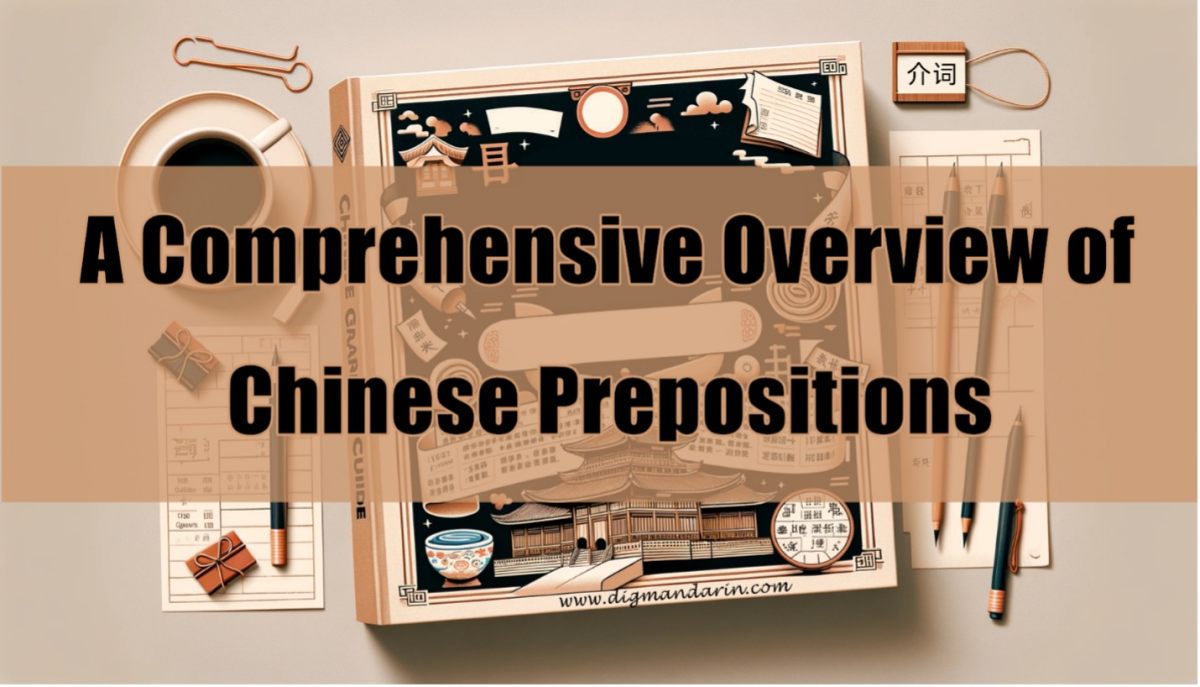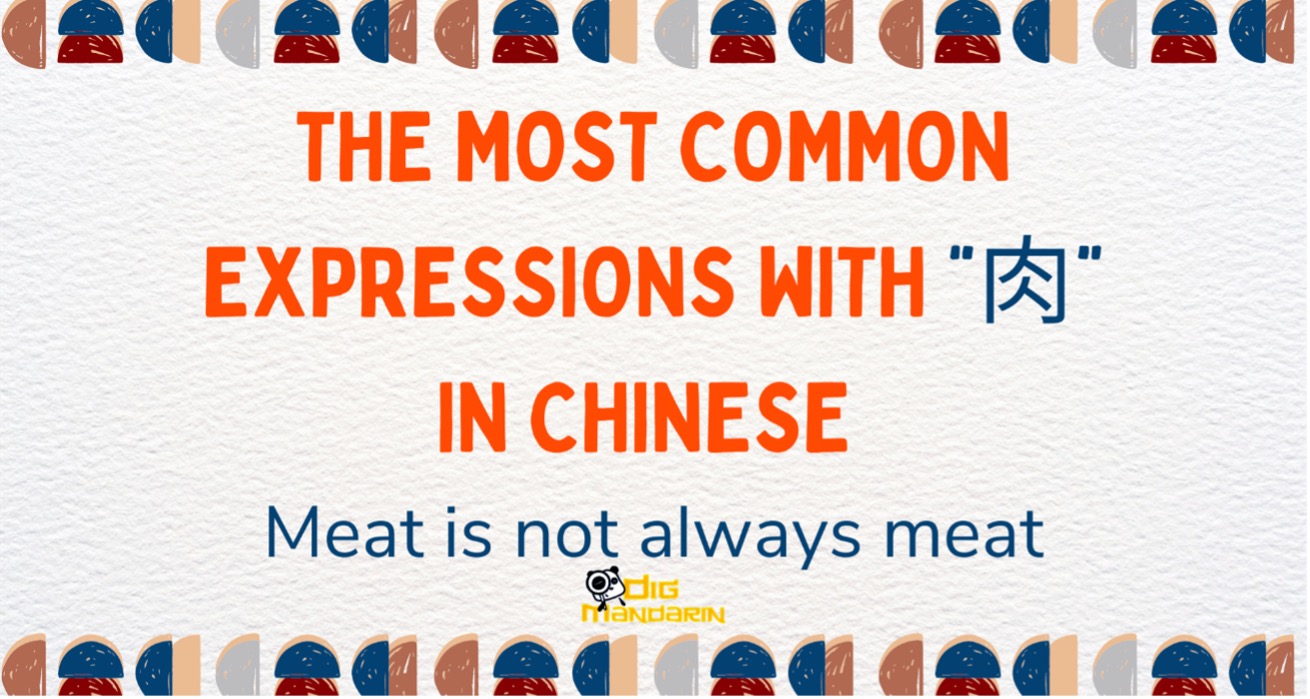Mastering the “被” Structure: The Chinese Passive Sentence Structure
Passive sentences are commonly used in Chinese and can cause confusion for foreign learners who are not accustomed to them. To assist in decoding this unique sentence construction, we will delve into the 被字句(bèi sentence structure) and teach you how to use the preposition 被(bèi).
The 被字句 (bèi structure) is a passive sentence structure in Chinese that utilizes the preposition 被(bèi) to indicate the agent responsible for an action or verb. The basic structure follows this pattern:
(Patient)Subject + 被(bèi) + agent + verb + complement/other elements.
Keep in mind that in certain situations, it is possible to omit 被(bèi) and the agent. Let’s explore some detailed examples to gain a better understanding of this structure:
The Affirmative Form
1. Basic form
(Patient)Subject + 被(bèi) + agent + verb + complement/other elements
E.g.
书被他拿走了。(Shū bèi tā ná zǒu le.)
The book was taken by him.
面包被妹妹吃了。(Miànbāo bèi mèimei chī le.)
The bread has been eaten by younger sister.
我被他打了。(Wǒ bèi tā dǎ le.)
I was beaten by him.
果汁被弟弟喝了。(Guǒzhī bèi dìdi hē le.)
The juice had been drunk by young brother.
When using the basic form, the emphasis is on the agent, or the one performing the action.
2. Leaving out the agent
(Patient)Subject + 被(bèi) + verb + complement/other elements
E.g.
自行车被偷了。(Zìxínɡchē bèi tōu le.)
The bike was stolen.
汉语书被借走了。(Hànyǔ shū bèi jiè zǒu le.)
The Chinese book has been borrowed.
手机被摔了。(Shǒu jī bèi shuāi le.)
The phone was dropped.
空气被污染了。(Kōnɡqì bèi wūrǎn le.)
The air is polluted.
This form highlights the result of the action rather than the agent. The agent is omitted when it is either unnecessary or unknown.
3. Leaving out both 被(bèi)and the agent
(Patient)Subject + verb + complement/other elements
E.g.
饭做好了。(Fàn zuò hǎo le.)
The meal is ready.
作业写完了。(Zuòyè xiě wán le.)
The homework was finished.
电影票买好了。(Diàn yǐnɡpiào mǎi hǎo le.)
The movie ticket was bought.
电脑修好了。(Diànnǎo xiū hǎo le.)
The computer has been repaired.
This type of structure focuses solely on the Subject and the outcome of the action.
The Negative Form
In the negative form of passive sentences, we use 没(有)(méiyǒu). It’s important to note that 有(yǒu) is frequently omitted as it is implied. In line with the affirmative form, there are two negative structures:
1. 没(有)(méiyǒu)before the preposition 被(Bèi)
(Patient)Subject + 没(有)(méiyǒu)+ 被(bèi)+ agent + verb + complement/other elements
(Patient)Subject + 没(有)(méiyǒu)+ 被(bèi)+ verb + complement/other elements
E.g.
自行车没被哥哥修好。(Zìxínɡchē méi bèi ɡēɡe xiū hǎo.)
The bike hasn’t been repaired by older brother.
自行车没被修好。(Zìxínɡchē méi bèi xiū hǎo.)
The bike hasn’t been repaired.
2. 没(有)(méiyǒu)before the verb
(Patient)Subject + 没(有)(méiyǒu) + verb + complement/other elements
E.g.
自行车没修好。(Zìxínɡchē méi xiū hǎo.)
The bike was not repaired.
作业没写完。(Zuòyè méi xiě wán.)
The homework isn’t finished yet.
Recap and Key Points to Remember
To provide further clarity, here’s a summary chart of the 被字句 (bèi structure). We’ll use the following sentence to illustrate the various affirmative and negative forms:
杯子被妹妹打碎了。(Bēizi bèi mèimei dǎ suì le.
The cup was broken by the young sister.
Affirmative forms:
| (Patient) Subject | 被 (bèi) | Agent | Verb | Complement/ Other elements | |
| 1. | 杯子 | 被 | 妹妹 | 打 | 碎了。 |
| 2. | 杯子 | 被 | \ | 打 | 碎了。 |
| 3. | 杯子 | \ | \ | 打 | 碎了。 |
Negative forms:
| (Patient) Subject | 没(有) (méiyǒu) | 被 (bèi) | Agent | 没(有) (méiyǒu) | Verb | Complement/ Other elements | |
| 1 | 杯子 | 没(有) | 被 | 妹妹 | \ | 打 | 碎。 |
| 2 | 杯子 | 没(有) | 被 | \ | \ | 打 | 碎。 |
| 3 | 杯子 | \ | \ | \ | 没(有) | 打 | 碎。 |
Lastly, let’s highlight a few key points:
i). In the first affirmative sentence structure, we can also use the prepositions 叫(jiào) and 让(ràng); the negative form can also be created using 不(bù) and 别(bié).
E.g.
字典叫他借走了。(Zìdiǎn jiào tā jiè zǒu le.)
The dictionary was borrowed by him.
钱包让小偷偷走了。(Qiánbāo rànɡ xiǎotōu tōu zǒu le.)
The wallet was stolen by the thief.
他的文章不被采纳。(Tāde wénzhāng bú bèi cǎinà.)
His essay hasn’t been received.
你拿着苹果,别让他吃。(Nǐ názhe pínɡɡuǒ, bié rànɡ tā chī.)
Keep the apple, don’t let him eat it.
ii). In the 被字句 (bèi structure), the verb must be followed by a modifying element, and it cannot be used alone.
Let’s compare the following sentences:
The water has been drunk:
√ 水被喝完了。(Shuǐ bèi hē wán le.)
※水被喝完。(Shuǐ bèi hē wán.)
※水被喝。(Shuǐ bèi hē.)
Although these three sentences may have the same meaning when translated into English, the original Chinese pattern and meaning are different. Usually, the last two sentences are considered grammatically incorrect in Chinese.
While passive sentences may cause some initial confusion, mastering this construction will greatly benefit your interactions with native Chinese speakers. By understanding and using passive sentences effectively, you can enhance your comprehension and communication skills in the language. If you have any further questions, please feel free to leave a comment below. Happy learning!
(You can also watch a summary video on passive sentences using 被(bèi) and more HSK-related grammar tutorials here.)





Thanks for the very important grammar pattern . It’s very helpful for me to understand the actual use of bei structure and and how to use it.
谢谢
I haven’t found a pattern matching the sentence I’m trying to figure out: “Wēibó fāchū, jǐ gè xiǎoshí nèi 微博发出,几个小时内 jiù bèi gè dà méitǐ zhuǎnfā bàodào 就被各大媒体转发报道”. The object must be in front of 被, if I understand the article above correctly. But in this sentence, if bèi(被) refers to shēngmíng声明 (mentioned earlier in the context), my question is: Why “baodao ” in the end? What part of speech is it? The translation would go something like: “(the statement) got spread by the big media (report?)”. If it refers to a report, why isn’t baodao before “bei” (instead of assumed “shengming”)? “Zhe ge baodao bei da meiti zhuanfa”). Looks like there are 2 objects – (skipped) ‘shengming’ and ‘baodao’.
Good question! Regarding your sentence, I think the confusing part for you is “被……转发报道”. Here, 转发 (verb.) means to share or forward, 报道(verb.)means to report, they are actually 被……转发(和)报道 and “和” is omitted.